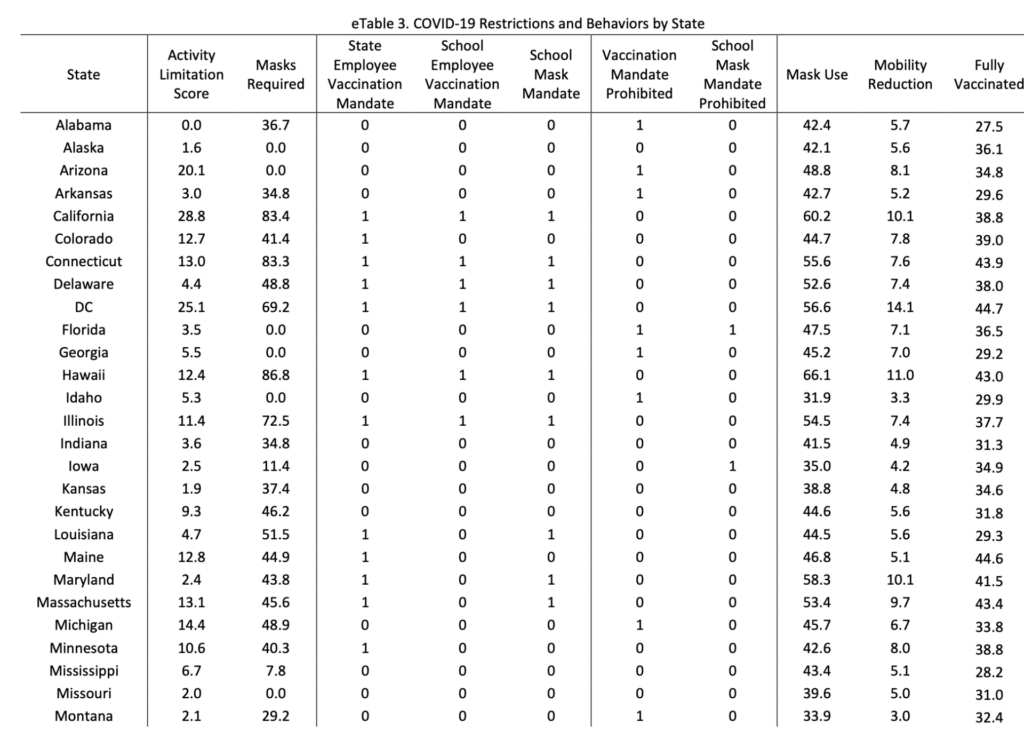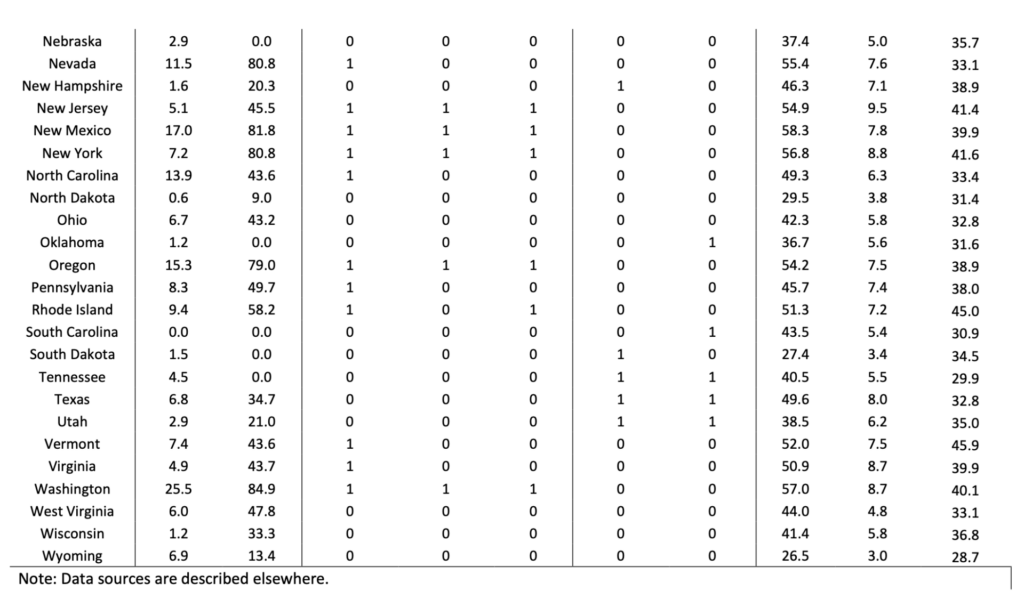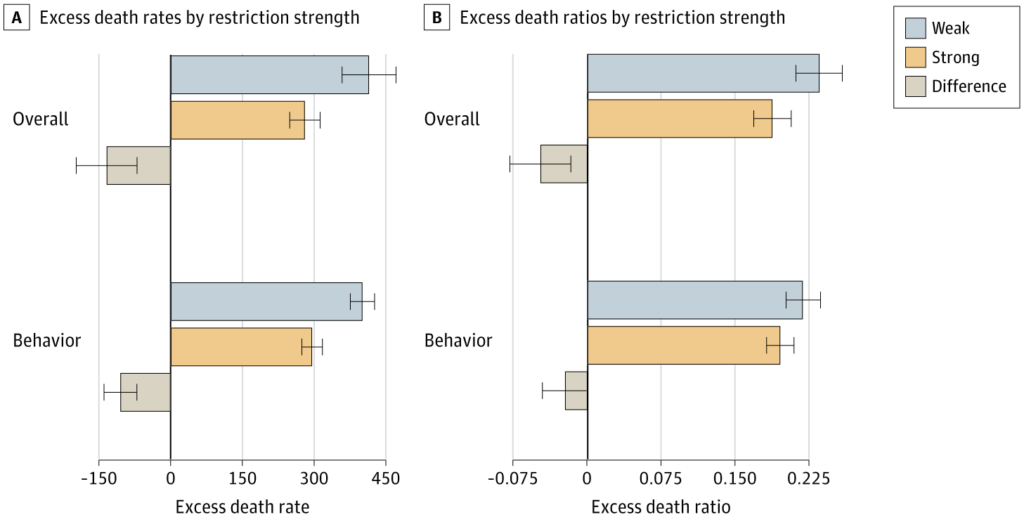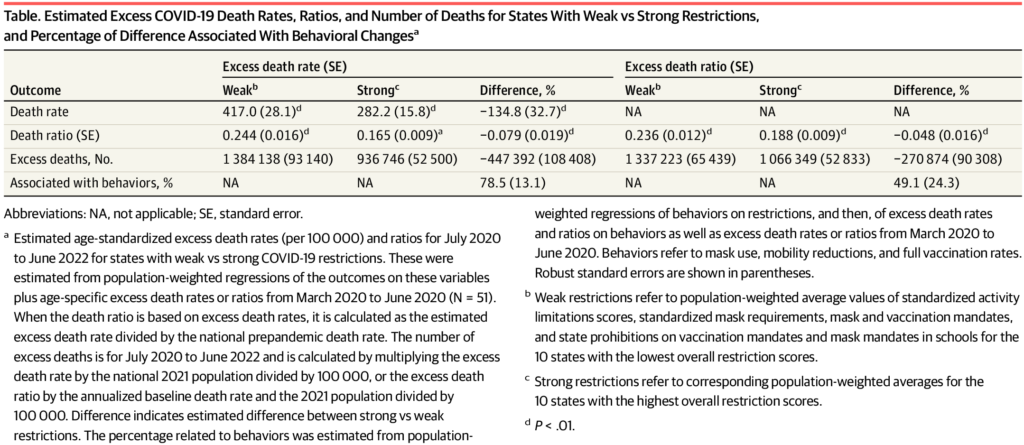One of many developments in the course of the COVID-19 pandemic that, I need to admit, I didn’t foresee was the fast improvement of widespread resistance to masks mandates resulting in their fast politicization, with a lot of the resistance coming from the best. I shouldn’t have been blindsided; that I used to be stunned was a results of my not having been sufficiently conscious of historical past, on condition that in the course of the influenza pandemic of 1918 there arose related resistance to masking and masks mandates, however, after all, in 1918 there was no mass media past newspapers and different publications, nor was there the Web or social media. In fact, it wasn’t simply resistance to masking that turned a difficulty throughout the newest pandemic; it was resistance to public well being interventions usually, together with masks mandates, restrictions on public gatherings, and, after all, vaccines. Of those, I spotted that the antivaccine motion would shortly switch its outdated misinformation, disinformation, tropes, pseudoscience, and conspiracy theories to the brand new COVID-19 vaccines, and so it did. Nonetheless, it was broader than that. It was about public well being, with resistance to vaccines being a part of the complete bundle of resistance to different public well being interventions, similar to masks mandates, college closures, enterprise closures, and restrictions on public gatherings.
In fact, COVID-19 was a novel organism when it unfold from its preliminary outbreak in Wuhan, China to the remainder of the world to turn into a pandemic. There have been no vaccines, nor have been there any efficient therapies apart from supportive care. For probably the most severely ailing sufferers, remedy consisted of mainly supporting the affected person and treating the compilations, hoping to maintain the affected person alive so long as attainable to permit the lungs and physique to recuperate. Nonetheless, the novelty of the virus didn’t imply that it was so fully novel and totally different from current respiratory viruses that nothing we knew earlier than about public well being was relevant anymore. It was a respiratory illness, unfold by respiratory droplets and aerosols. It was a coronavirus, and we knew quite a bit about coronaviruses, notably given the shut name we had with SARS in 2002-2003. There was a protracted and in depth public well being literature and appreciable expertise in coping with infectious respiratory viral illnesses. Briefly, it was not essential to reinvent the wheel.
That’s why, whereas perusing my common sources for data, monitoring quacks and antivaxxers, and weblog fodder, a research revealed on Friday in JAMA Well being Discussion board, entitled US State Restrictions and Extra COVID-19 Pandemic Deaths. A few of the descriptions of the research have been a bit…hyperbolic, as an illustration:
Others have been extra simple:
One factor that caught my eye concerning the research was that it’s a single creator research. This can be a fairly uncommon factor today. The opposite factor that caught my eye was that it was by an economist, Christopher J. Ruhm, though he’s a well being coverage economist and the research did comply with Strengthening the Reporting of Observational Research in Epidemiology (STROBE) reporting guideline for cross-sectional research.
Within the introduction, Ruhm mainly says what I mentioned above, simply with references:
US states swiftly responded to the emergence of COVID-19 by implementing quite a lot of insurance policies together with preliminary emergency declarations, numerous types of shutdowns and, later, masks and vaccine mandates. The preliminary actions have been virtually common,1 however opposition to those measures shortly developed.2,3 This dissent spilled into the political area the place Republican governors and legislatures in a number of states restricted the authority of public well being officers and banned masks and vaccine mandates.4,5
Quite a few research have evaluated the affect of insurance policies designed to mitigate the COVID-19 pandemic.6–8 Early analyses recommended that sturdy social distancing measures curtailed the preliminary unfold of COVID-19,9,10 with proof of interactive results between private and non-private mitigation efforts.11 Nonetheless, the particular modeling assumptions and design standards of a few of these research have been questioned,3,12,13 and these analyses usually lined solely the preliminary phases of the pandemic.
I can’t assist however observe that limiting the authority of public well being officers has lengthy been a aim of the antivaccine motion, courting again years earlier than the pandemic. Certainly, a number of years in the past, as measles outbreaks have been popping up once more as the results of low MMR vaccine uptake, Republicans in my very own state tried to move a invoice that will have sharply restricted the ability of native public well being officers to behave throughout an outbreak, together with their energy to maintain unvaccinated youngsters out of college, an incident that I as soon as sarcastically known as “make measles nice once more,” on condition that it occurred early within the first Trump administration. In any occasion, throughout COVID-19, there was a stark distinction between “purple” and “blue” states by way of masks mandates, “shutdowns,” and vaccine mandates.
This research particularly checked out seven state exercise limitations handed early within the pandemic, together with stay-at-home orders; restaurant, bar, leisure exercise, major college, and better training closures; and restrictions on public gatherings, information obtained from the Institute for Well being Metrics and Analysis (IHME). As well as, three behaviors have been examined, together with the share of the inhabitants finishing a major COVID-19 vaccination sequence and the the share of days people said that they all the time wore a masks outdoors their residence. As well as:
The proportion of the evaluation interval throughout which all states required people to put on masks when outdoors of the house was calculated utilizing data from Ballotpedia35; for the District of Columbia, information have been from the IHME.34 Kaiser Household Basis information36 have been used to assemble variables indicating whether or not state authorities or college workers have been required to be vaccinated as of February 2022, whether or not there have been college masks necessities, and whether or not there have been prohibitions on authorities vaccine or college masks mandates.
Precise behaviors have been additionally examined:
Three behaviors have been examined. CDC vaccination information37 have been used to calculate the share of the inhabitants finishing a major COVID-19 vaccination sequence. The proportion of days people said that they all the time wore a masks outdoors their residence (masks use) was obtained from IHME.34 Reductions in time outdoors the house in contrast with the prepandemic interval (mobility reductions) got here from Alternative Insights.38
The time interval chosen for correlating public well being insurance policies with extra loss of life charges was chosen to be July 2020 to June 2022, as a result of earlier than July 2020 state restrictions and public well being insurance policies have been very related throughout all states; it was the summer season of 2020 when insurance policies began to diverge between “purple” and “blue” states, as defined within the introduction:
An extra problem is that preliminary COVID-19 publicity was concentrated in a small variety of places: primarily New York state, its surrounding states, and Massachusetts. These preliminary an infection charges have been most likely largely idiosyncratic, reflecting elements similar to having excessive inhabitants densities, being journey locations, and making in depth use of public transportation.16–18 Throughout this early interval, coverage variation throughout states was restricted1 and the lethality of COVID-19 was particularly excessive19 as a result of medical professionals had little expertise with and few instruments accessible to deal with extreme COVID-19 infections. Consequently, research containing information for the early pandemic interval, similar to these analyzing the general efficiency of states20 or teams of coverage responses,21 confronted specific challenges. Reverse causation additionally could have been problematic on condition that states with the worst preliminary situations have been more likely to have applied probably the most restrictive insurance policies.22 Furthermore, restrictions have been usually launched as packages, which made it tough to disentangle particular coverage results.
And as documented within the dialogue:
Appreciable coverage variation emerged within the second half of 2020, with states decreasing or eliminating exercise limitations and, considerably later, masks necessities. Mobility reductions additionally declined quickly throughout this era, as did masks use after the beginning of 2021. Vaccinations first turned accessible in December 2020 and shortly turned widespread, however with appreciable geographic heterogeneity. Exercise limitations had been primarily phased out by June 2021 and masks necessities by March 2022, at which level 23 and 11 states had instituted vaccination mandates for state and college workers, respectively, and 15 states had mandated masks in colleges. Conversely, 13 states had prohibited vaccination mandates and seven had outlawed college masks necessities (eTable 3 in Complement 1).
I believe it’s price taking a look at eTable 3, simply to see the variability between states in insurance policies after July 2020:


That’s a wide selection of public well being interventions and a large variability in what was permitted in numerous states. So how did this correlate to extra deaths? Briefly, Ruhm started the evaluation roughly 4 months after the primary COVID-19 deaths within the US to mitigate what he describes because the “largely idiosyncratic variation initially of the pandemic.” He then checked out extra deaths, age-standardized extra loss of life charges per 100 000, and extra loss of life ratios, utilizing utilizing state-level mortality and inhabitants information from the US Facilities for Illness Management and Prevention for 2017 to 2019 as baseline to check the surplus loss of life charges from 2020 to 2022. Furthermore, his major evaluation targeted much less on particular person insurance policies, however on packages of “weak” versus “sturdy” public well being interventions, outlined thusly:
Due to this fact, specific emphasis was positioned on outcomes for packages of weak and robust restrictions, the place the previous (latter) have been calculated utilizing population-weighted averages for the ten states with the bottom (highest) general restriction scores. Particularly, weak restrictions referred to exercise limitation scores and masks necessities of 0.80 and 1.41 SDs lower than the nationwide common; no vaccine or masks mandates; and vaccine and college masks prohibition values of 0.79 and 0.75, respectively. Sturdy restrictions referred to exercise limitation scores and masks necessities of 1.07 and 1.26 SDs, respectively, higher than the nationwide common; common college and state vaccination mandates and college masks necessities; and no vaccine or masks mandate prohibitions (eTable 1 in Complement 1).
This brings us to the “cash determine,” Determine 3:

Persevering with the evaluation, Ruhm tries to estimate what number of extra individuals would have died if all 50 states had adopted the “weak” restrictions and what number of lives may need been saved if all 50 states had instituted “sturdy” restrictions, resulting in the second “cash chart,” this desk:

These analyses led the Ruhm to look at:
Utilizing the first specs, the estimates recommended that if all states had weak restrictions, there would have been 1.3 million to 1.4 million extra deaths from July 2020 to June 2022, that’s, 271 000 to 447 000 greater than estimated with common sturdy restrictions, a 25% to 48% distinction (Desk). In comparison with the 1.18 million precise extra deaths over the research interval, weak restrictions in all states would have resulted in an estimated 13% to 17% enhance, and robust restrictions in a ten% to 21% lower. Behavioral modifications have been related to 49% to 79% of the general restriction premia (Desk and Determine 4; eTable 9 in Complement 1).
Curiously, not all polices have been as strongly related to larger or decrease extra loss of life charges, as Ruhm notes within the dialogue, at the same time as he accurately and emphatically factors out that his research doesn’t help the resistance view that COVID-19 public well being interventions don’t work:
These research findings don’t help the views of these opposing COVID-19 restrictions who erroneously consider the restrictions didn’t work. On the contrary, the bundle of insurance policies applied by some states most likely saved many lives. Nonetheless, all restrictions weren’t equally profitable. Proof of protecting results was weakest for exercise limitations. This may increasingly have partially hid advantages initially of the pandemic, earlier than the evaluation interval, or mirrored reverse causation given that the majority exercise limitations have been applied earlier than political issues dominated, when states have been more likely to be particularly attentive to native variations in an infection charges.
I additionally observe that Ruhm didn’t downplay or deny the potential prices of the general public well being interventions described, opposite to the caricature of public well being advocates promulgated by these against public well being interventions as individuals who don’t give a rodential posterior concerning the hurt brought on by enterprise and college closures, limitation of nonurgent care at hospitals, and the like. He even notes that “reductions weren’t essentially adequate to justify imposing restrictions as a result of additionally they imposed quite a lot of prices,” pointing to harms to academic attainment brought on by college closures, in addition to harms by way of monetary loss and social isolation, notably in nursing residence sufferers, brought on by “lockdowns,” at the same time as he notes that harms from “lack of liberty” that may’t actually be exactly valued. Being an economist, Ruhm couldn’t assist however put issues in additional monetary phrases than I as a doctor like, noting that “utilizing worth of statistical life estimates starting from $4.7 million to $11.6 million,42,43 the estimated lives saved from sturdy (vs weak) restrictions over the 2-year interval have been price $1.3 trillion to $5.2 trillion—6% to 22% of 2021 gross home product—offering a attainable benchmark towards which to judge this loss.”
Total, to me this research is fairly sturdy proof that longstanding public well being science didn’t must be reinvented at the start of the pandemic and that normal interventions for infectious viral illnesses labored for COVID-19, regardless of how a lot advocates of “pure herd immunity” and antivaxxers—however I repeat myself—attempt to argue in any other case. The research just isn’t with out weaknesses, clearly. No research is. As an illustration, it is a cross-sectional research and subsequently can’t straight show causation, and the research design was on the state degree, which meant that the research couldn’t establish results as a result of polices of native governments. Additionally, since insurance policies have been usually launched as “packages,” it was tough to assign significance to particular person insurance policies. Timing of coverage implementation wasn’t all the time clear, both. Even so, I’ve to agree with Ruhm that his research is persuasive proof that “sturdy COVID-19 restrictions saved lives and that the loss of life toll was most likely significantly larger than it could in any other case have been in states that resisted imposing these restrictions, banned their use, or applied them for under comparatively quick durations of time.”
As I wrote this on Sunday, I used to be slightly stunned at how little dialogue I discovered relating to this research from the same old sources that I’d have anticipated to be attacking it. I didn’t even discover a lot on X, the hellsite previously referred to as Twitter, the place I’d have anticipated to search out loads of the same old suspects piling on, looking for any flaw that they might. The overwhelming majority of the posts on X have been both constructive or simply impartial postings of a hyperlink to the research and a narrative about it. It’s been two days for the reason that research was revealed; that’s often loads of time for Brownstone Institute flacks, “Wise Medication” courageous mavericks, and antivaxxers to have provide you with lengthy rants about how dangerous the research has. I don’t know whether or not the shortage of such assaults signifies that they haven’t discovered a superb assault but or that, for some purpose, they haven’t actually seen the research regardless that it was revealed in a JAMA journal. What I do know is that thesis but extra proof that public well being interventions work and that failure to stick to them is related to pointless loss of life and morbidity.
